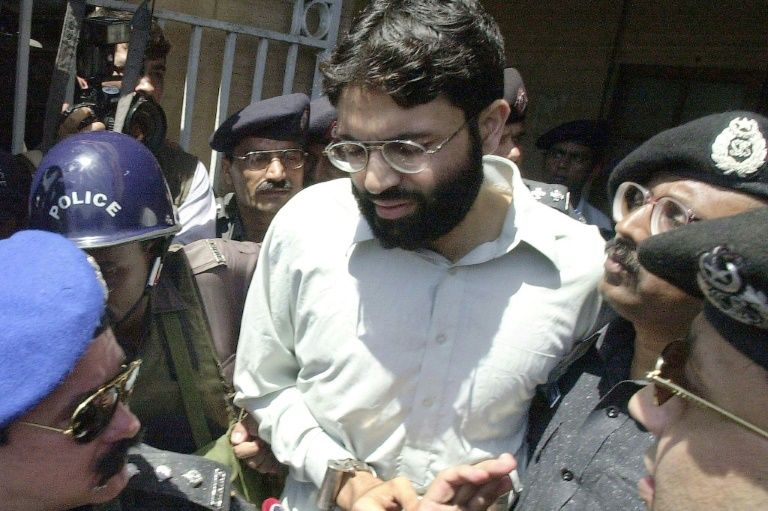Omar Sheikh: from private schoolboy to militant kidnapper
Pakistani police escort a handcuffed Omar Sheikh from court in Karachi in March 2002. ©AFP/File Aamir QURESHI
Islamabad (AFP) – Ahmed Omar Saeed Sheikh, the militant who spent over 18 years behind bars for masterminding the abduction of slain US reporter Daniel Pearl, traded privilege and scholarship for a life of jihad, kidnappings, and ultimately a prison cell.
Born in London in 1973 to a prosperous Pakistani garment merchant, Omar was given the best education, including enrolment at a private primary school in London, a stint at Lahore’s prestigious Aitchison College, and a brief tenure at the London School of Economics (LSE).
He abandoned his comfortable Western upbringing after just a year at LSE, reportedly travelling to Bosnia during the brutal Balkans war in the early 1990s, where his jihadist zeal sprouted after coming into contact with Pakistani militants.
The former boxer and arm wrestling enthusiast is believed to have returned to Pakistan to spend several months in a militant training camp, and travelled to the disputed Himalayan region of Kashmir to fight Indian forces.
In India he carried out his first kidnapping, abducting an American and three British tourists in 1994.
Indian police captured him in a shootout, initially thinking he was one of the British hostages because of his clipped accent and Western bearing.
He was jailed in New Delhi, but never charged.
In prison he met Pakistani jihadist Maulana Masood Azhar, who went on to found the hardline Kashmir militant group Jaish-e-Mohammed.
New Delhi freed both Azhar and Omar in 1999 when the hijackers of an Indian Airlines plane demanded his release in exchange for their hostages.
Omar returned to Lahore to live with his family, marrying in November 2000.
– Pearl killing –
Omar came into contact with Pearl, the Wall Street Journal’s South Asia bureau chief, when he was delving into the murky underworld of Pakistani militant groups after the September 11 attacks and in the wake of the US invasion of Afghanistan.
The two exchanged several emails, according to police, as Pearl sought introductions to militant leaders.
In their correspondence Omar presented himself as a warm, family-oriented man — all part of a ploy to lure Pearl to a trap that ultimately led to his abduction during a reporting trip in Karachi in January 2002.
Omar was arrested in February 2002 while Pearl was still missing, and boasted to a Karachi court that the journalist was already dead.
A week later, a graphic video depicting Pearl’s gruesome decapitation was delivered to the US consulate in Karachi.
Omar remained defiant even after being sentenced to death for his role in the kidnapping.
“We shall see who will die first, either I or the authorities who have arranged the death sentence for me,” he said in a message read out by his lawyer.
However in January 2011, a report released by the Pearl Project at Georgetown University following an investigation into his death made chilling revelations, claiming that the wrong men were convicted for Pearl’s murder.
The investigation, led by Pearl’s friend and former Wall Street Journal colleague Asra Nomani and a Georgetown University professor, claimed the reporter was murdered by Khalid Sheikh Mohammed, the alleged mastermind of the September 11 attacks, not Sheikh.
Mohammed, who is currently in the US military prison in Guantanamo Bay, confessed to killing Pearl, according to American officials in 2007.
Defence lawyers for Sheikh had his murder conviction and death sentence overturned in early 2020, and that was upheld by the country’s Supreme Court Thursday, paving the way for his release along with three other accomplices.
Disclaimer: Validity of the above story is for 7 Days from original date of publishing. Source: AFP.


